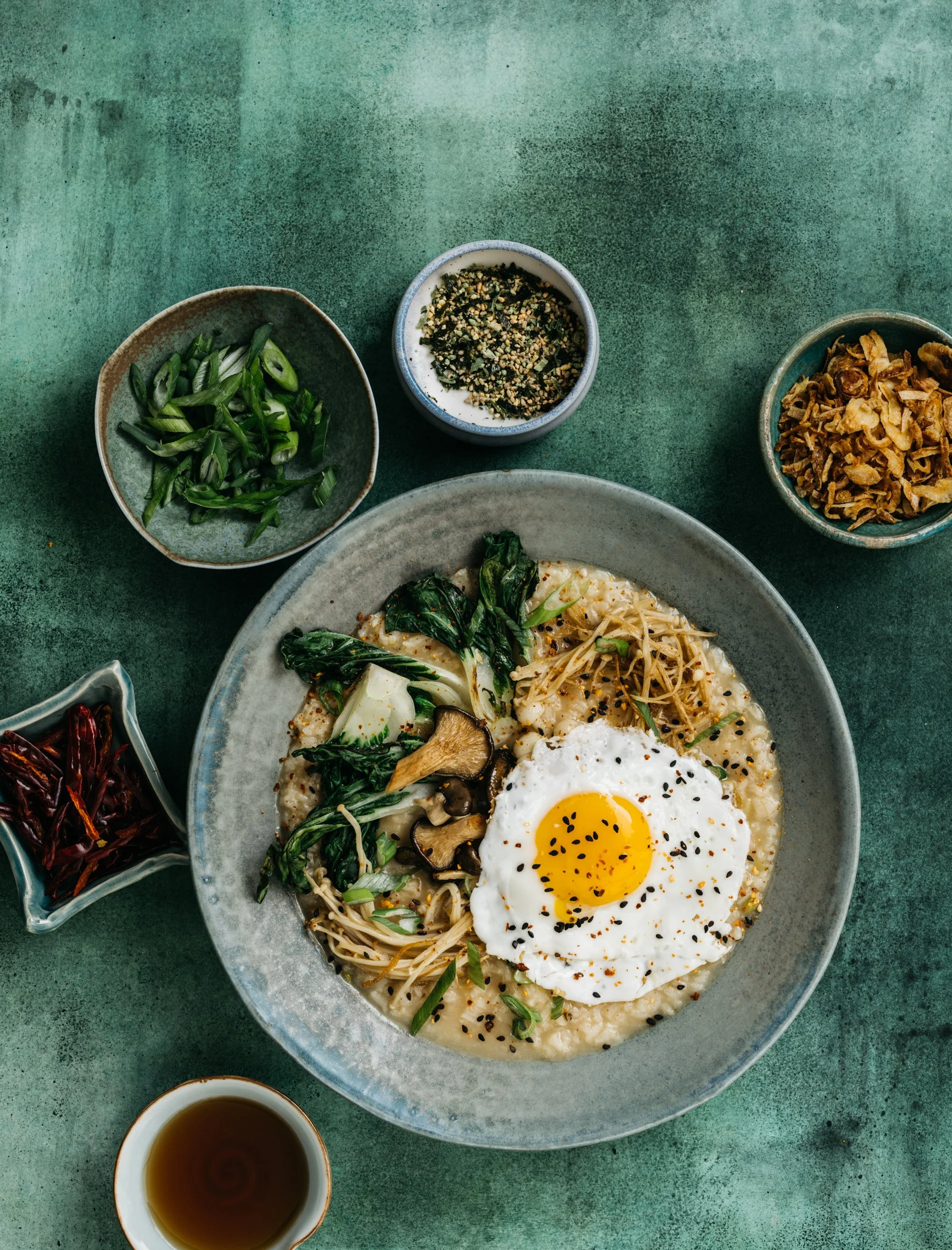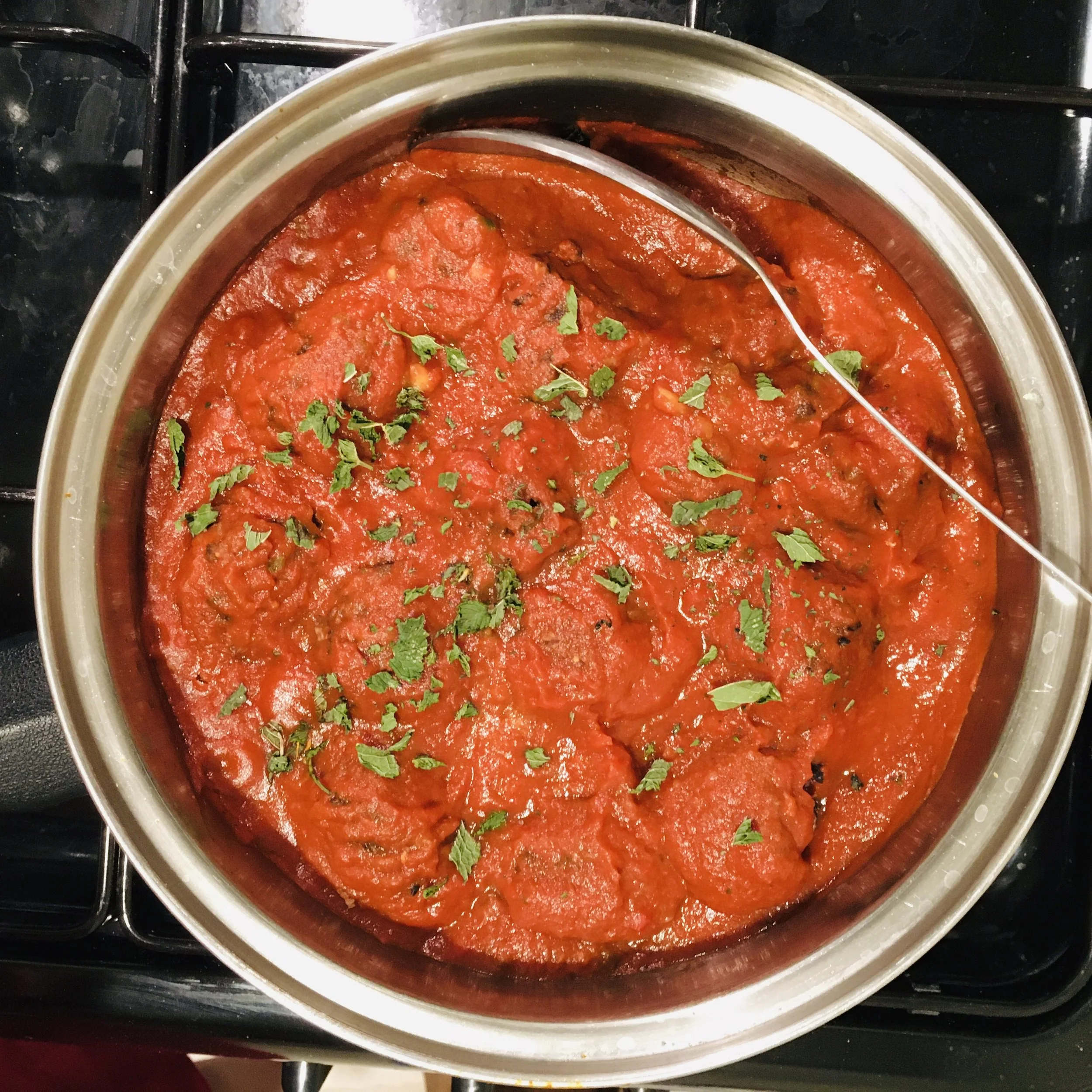Readers’ Recipe Contest: Family Heirlooms
Edited by Rachel Caldwell / Photo by Michael Piazza / Styled by Catrine Kelty
The Readers’ Recipe Contest is generously sponsored by The Cambridge School of Culinary Arts
When Hannah Cai’s pitch-perfect contest entry arrived, I balked. Andrew Janjigian’s Wheaty Warming Savory Porridges story (in this issue on page 25) already included a riff on congee, but Hannah’s classic recipe, with its telling vignettes and savvy cooking tips, was exactly what we’d envisioned when we asked for your “Family Heirlooms.” We didn’t plan to print two congee recipes in one issue of the magazine, but we really had no choice; hers was clearly our Readers’ Recipe Contest winner. Keshkeg, an Armenian chicken and wheat porridge made with bulgur, inspired Andrew’s congee. Hannah’s classic rice porridge evokes her Chinese grandfather but encourages experimentation and play; the garnishes she suggests are traditional but could also be Korean or Japanese. The two recipes’ coexistence in these pages beautifully illustrates the “commonalities between foodways” that Cai alludes to in her winning submission. We couldn’t have planned it better if we tried.
At the bottom of Hannah’s recipe, find the runners-up; we had so many wonderful entries this season!
Most people know that I have a sweet tooth, but between you and me, when it comes to rice porridge I’ll choose savory over sweet. Rice porridge is a comfort food shared across cultures that possesses many names. In my Chinese family, we know it as congee, 周 (zhou in Mandarin or jook in Cantonese), and sometimes 稀飯 (xi fan in Mandarin or hei fan in Cantonese).
Despite its reputation as a poor man’s dish and an antidote for upset stomachs, congee is enjoyed across social classes and occasions. In an upscale restaurant, it may be served with myriad sides, like thousand-year-old eggs, pork floss and deep-fried youtiao, a delightful, doughy juxtaposition between crispy and fluffy, like a savory cruller. After weekend trips to visit family in New York City, quart containers of congee infused with ginger and scallion, swimming with delicate chunks of white fish, would often sit nestled in someone’s lap on the car ride home. In our household, leftover turkey congee is more highly anticipated than the Thanksgiving meal itself.
Whatever name you choose to call it and however it’s served, the recipe is marked by its large ratio of water to rice and long cooking time. After simmering on the stove for one to two hours, the grains of rice bloom and release their starches into the liquid, resulting in a creamy, easy-to-digest porridge that’s as nourishing as it is comforting.
I remember how, growing up, my grandpa’s congee would warm me to the bones when I came back from a day in the snow. After his death, I’d watch my parents deliberate the amount of water to use for an overnight method that, in keeping with our family recipes, lacked precise instructions. Today, after a few years of experimentation and learning my way through the kitchen, I’ve made this family tradition my own with a couple of twists.
By roasting chicken and turkey carcasses for a homemade stock, I’m able to infuse more flavor (and a golden hue).
Thanks to a trick learned from The Woks of Life, the cooking time is reduced six-fold by using frozen washed rice.
After 20 minutes of simmering, big bowls are ladled out and garnished. We like the textural contrast and umami of thin, slippery enoki mushrooms and stubby, chewy shiitakes. Tender slices of poached chicken pair beautifully with bok choy and a generous drizzle of ginger scallion oil. As culinary diplomats, we’ll even repurpose leftover pulled pork by tossing it in Korean barbecue sauce and topping the bowl with Japanese furikake, or pair a crispy fried egg with kimchi.
The composition is limitless; as chef/writer Kiki Aranita described, “Congee is a canvas, a malleable dish that reflects culturally specific ingredient combinations, establishments and even the families that make it.”
As much as it symbolizes the comfort of home, congee also reminds me of the commonalities between foodways. No matter how many unique culinary traditions exist in our world, cultural variations of a basic concept, like rice porridge, point me to our shared identities as eaters. –Hannah Cai
20-MINUTE CONGEE
Submitted by Hannah Cai
Serves 4–6
7 cups stock (chicken, vegetable; homemade if available) or water
1 cup jasmine rice
2-inch knob ginger, sliced (optional but recommended)
2 scallions (optional but recommended)
salt, to taste
Suggested toppings:
sautéed mushrooms
steamed baby bok choy
fried or soft-boiled eggs
black sesame seeds or Japanese furikake spice
chili crisp or shredded dried chilies
crispy fried shallots or onions
(Do ahead): Wash the rice two or three times, until the water runs mostly clear. Soak the rice in fresh water for 30 minutes; drain. Place the rice in a zip-top bag or freezersafe container and freeze for at least 8 hours.
When you’re ready to cook the congee, trim the ends off the scallion (if using). Cut in half to separate the whites and set to the side; no need to chop them. Slice the scallion greens and reserve for garnishing later.
In a large pot, bring the frozen rice, stock or water, ginger and scallion whites (if using) to a boil. Reduce the heat to low, cover the pot with a lid and simmer for 10 minutes without stirring.
Increase the heat to medium, remove the lid and stir occasionally for an additional 10 minutes, until the porridge has thickened to your liking. Add salt to taste. Garnish with sliced scallion greens (if using) and serve with your desired toppings.









